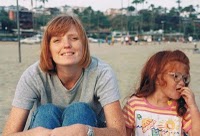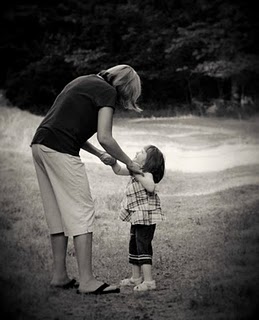 Monday, October 11, 2010 at 7:00AM
Monday, October 11, 2010 at 7:00AM Mollie was diagnosed with an "unknown genetic syndrome" until she was 8
Christina, Mollie's mom and one of the first advocates for 1p36 Deletion Syndrome, tells about her daughter and how she was finally diagnosed.


As the months passed, Mollie’s development continued to be slow and her facial features seemed to be a little unique. Mollie was sent to yet another specialist, a Dysmorphologist. This is a doctor that studies congenital malformations (birth defects). The doctor said that she was certain that Mollie had a genetic disorder but she would need testing to be sure what the disorder was. Mollie’s chromosomes were tested and all the tests came back normal, but the doctor was sure there some something they missed. This is when I first heard the term “unknown genetic syndrome”. For the next several years, we search for a diagnosis as Mollie worked hard to reach the developmental milestones most parents take for granted. We returned to the Dysmorphologist every year. Her chromosomes were checked again, and again they came back normal. We went on with our lives and Mollie continued with physical therapy, occupational therapy, speech therapy, doctors, surgeries and specialists. We went to birthday parties and play groups and other mothers would tip-toe around the fact that my perfect child was obviously imperfect by the world’s standards. As a parent, it is one of the most isolating circumstances to be in. We didn’t fit in with “normal” families. No one understood the demands of caring for a disabled child. My peers were becoming Soccer Moms and I was becoming a Therapy Mom. Who has time for extra activities when our days are filled with doctor’s appointments, therapies, IEP meetings, insurance appeals, not to mention the stress and worry. We didn’t exactly fit in with the special needs groups either. They all seemed to be gathering by diagnosis. Down’s Syndrome, Autism, Cerebral Palsy etc….they seemed to be private clubs that one could only enter if you actually had a diagnosis.
When Mollie was eight years old we made our annual trip to UCI Medical Center to visit her Dysmorphologist. Dr. Bocian told us that she wanted to test Mollie’s chromosomes again but this time she wanted the lab to specifically look at Mollie’s first chromosome. She had just the day before our appointment read a research paper about 1p36 Deletion Syndrome. She handed me a paper and a nurse drew blood and hope grew. After searching for eight years, had we found a diagnosis?
I went home and Googled “1p36 deletion syndrome” The only thing I found was the journal article the doctor had just given me. I searched and searched and waited for the lab results. Two weeks later, the doctor called to tell me that the lab results confirmed that Mollie had a chromosome deletion. She was missing the tip of her first chromosome. Mollie’s syndrome had a name: 1p36 Deletion Syndrome or Monosomy 1p36.
I continued to search for information about the syndrome. I found a Yahoo Group of three other moms. For years, there were only five of us in that Yahoo Group… five people in the entire world who understood. Now there are over 200 members. I contacted a doctor doing research on the deletion and Mollie was invited to participate in a clinical study. We flew to Texas and stayed at Balyor Collage of Medicine for a week and the doctors ran every test imaginable. I left that hospital with more knowledge about 1p36 Deletion Syndrome than most doctors had.
 In 2007, our group of five moms had grown to over 200 members and we held our first conference in Jacksonville, Florida. 2007, 15 years after Mollie was born, 7 years after she was diagnosed. As the conference started, I sat down next to Karen, one of those first 5 moms in the Yahoo Group. We looked around the room and then looked at each other with tears in our eyes. We were home. We found our family.
In 2007, our group of five moms had grown to over 200 members and we held our first conference in Jacksonville, Florida. 2007, 15 years after Mollie was born, 7 years after she was diagnosed. As the conference started, I sat down next to Karen, one of those first 5 moms in the Yahoo Group. We looked around the room and then looked at each other with tears in our eyes. We were home. We found our family.
In 2007 I sat in a room full of people who didn’t look at my child like something was wrong with her. I sat in a room full of people who saw Mollie as I saw her on the day she was born. I sat in a room full of people who saw Mollie as God’s perfect creation.










